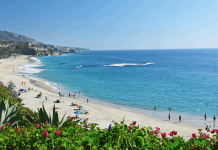Argentina is one of the most exciting places to visit in South America, so it’s no surprise that travelers often include it in their plans. Some call Buenos Aires the “Paris of South America” because it mixes Latin American and European cultures and has people from many different places.
As a whole, Argentina is a kaleidoscope of different cultural influences and experiences. When planning to visit Argentina, take note of these tips to help you have the best trip to this popular country in South America.
Best Time to Visit
The best time to visit Argentina is between the end of October and the end of March, in the late spring and summer, when the weather is nice, and you can enjoy the whole country. December to February is the peak season, when the highest number of tourists visit the most popular places.
You will need to book buses, flights within the country, and places to stay in advance. If you want to see wildlife in Peninsula Valdes and Punta Tombo, the best time to visit Argentina is in the summer (though whales and orcas are spotted during the winter months).
Meanwhile, the best time to go to Patagonia and Tierra del Fuego is in the summer, when it’s not too cold at Perito Moreno. Buenos Aires is very hot, but the weather is very pleasant in September and October when all the jacaranda trees are in full bloom.
Be Wary of the Sun
In Argentina, you should pay a lot of attention to the sun. In the summer, the north of the country, especially the Chaco region and La Rioja Province, is one of the hottest places in Latin America. Temperatures often soar above 40°C, so locals take long siestas to avoid getting too tired from the midday heat.
If you can, try to keep activities to a minimum between 11 AM and 4 AM. If you have to be out in the sun, wear sunscreen and a hat. Also, you should drink a lot of liquids, but not alcohol, and always ensure you have enough water when hiking.
The sun can be very strong all over the country, and even people with darker skin should use sunscreen with a higher SPF than they usually would. Don’t be fooled by the fact that it’s cooler in the south.
Check Out Less-Visited Sights
When you first arrive in Buenos Aires, a few famous sights will be atop of your “To-See” list, such as Caminito Street, La Casa Rosada, Plaza de Mayo, Retiro Cemetery, and San Telmo market.
These are all the hotspots mentioned in guidebooks while visiting Buenos Aires. However, if you want to get the most out of your time in Buenos Aires, you must visit some of the things tourists typically skip over.
A boat ride on the Tigre Delta, a walk through the nature reserve, a visit to the Mataderos Fair market on a Sunday afternoon, and a walk through the Palermo Woods are all things that many tourists never get around to doing but will give you a real look at how people live in this fascinating city.
Don’t Forget to Try the Steak
Argentina’s meat is known all over the world. The steaks in Argentina are delicious and a good value for the money. When you visit Argentina, you must go to a typical asado and sample the fine beef and other meats available.
There are a lot of great restaurants with some of the best steaks you’ll ever eat, but if you want a truly cultural experience, try to get invited to an asado with a local family. If a family invites you to an asado, prepare by eating nothing during the day because people often eat enough meat for a week at these events.
Vegetarians, get ready to see a lot of confused looks and be asked over and over again if you want meat. You will have to explain yourself a lot. When you’re eating with Argentinians, eat slowly. In Argentina, eating is also about having fun with the people you are with, so meals can be long and social.
Feel Free to Cross the Borders
There are several places where you can cross the border to visit Argentina’s neighbouring countries such as Uruguay, Bolivia, Brazil, Chile, or Paraguay. Most of the time, crossing the border is easy.
Keep in mind that you can’t bring any fruits or vegetables into Chile. Any fresh food you have with you must be thrown away or written down on your immigration card before you cross the border.
The fines for not doing so are low, but the Chilean authorities will take the time to measure every item that can’t be brought into Chile to give you an appropriate fine. This may slow down the whole process of crossing the border and irritate everyone on the same bus.
Have Local Money at All Times
The Argentine peso is the currency that changes the most, if not the whole world. The inflation rate is very high, and prices can change significantly in just a few weeks. In Argentina, cash is king.
Credit cards (Visa and Mastercard, but not American Express) are accepted in hotels and restaurants that cater to tourists. However, they are less widely accepted in smaller shops, and most of the time, you’ll want to pay with cash instead of a credit card because there is often a surcharge.
But there’s another problem: ATMs in Argentina cost a lot of money. Even if your bank doesn’t charge you to withdraw money while in Argentina, local ATMs may charge you up to $10 and limit how much money you can withdraw in a single transaction. There’s no way around it, and you should budget for withdrawal fees when planning your trip.
Learn Some Spanish
When planning a trip to Argentina, brush up on your Spanish language skills, even if you can only devote a few hours every week to studying the language. Most people in Argentina speak at least a little bit of English, and even a little Italian. But if that doesn’t work, they’ll be happy to use hand gestures to help you.
In other words, don’t worry about not being able to speak the language. You will get by on your trip. Learning at least a few words of the local language is still suggested as an important travel tip before traveling to any new place.
A word of caution, though: the Spanish spoken in Argentina is not the same as that in Spain or even Mexico. It is generally a bit slower, the intonation is different, some sounds and words are pronounced completely differently, and different words are used to talk about the same thing.
Note the Store Hours
Generally speaking, businesses are open Monday through Friday from 9 AM to 7 PM and on Saturday from 9 AM to 2 PM. Outside the capital, they may close for one to five hours in the afternoon.
Typically, the farther north you go, the longer the siesta, but shops often stay open later in the evening to make up for it. For example, most supermarkets are open until 8 PM or even 10 PM, as well as on Saturday afternoons. Large shopping malls don’t close before 10 PM, and their food and drink areas (called “patios de comida”) may stay open until midnight.
A lot of them are also open on Sunday. Money exchanges keep regular shop hours, but most banks are only open during the week, with hours as early as 7 or 8 AM in places with higher temperatures and close at noon or 1 PM.
Prepare Clothes for All Weather
Due to the size and diversity of Argentina’s terrain, the country experiences virtually any climatic condition that can be conceived of. Depending on where you intend to spend most of your time during the trip, you will be required to bring an appropriate wardrobe for that location.
However, you should be prepared to pack for various activities, from exploring glacier vistas to lounging on the beach. Porteos, the name for the people who live in Buenos Aires, place a high value on fashion.
This adds another layer of complexity to the situation, as Buenos Aires is a stylish and cosmopolitan city. If you can pack for every possible terrain, weather, and social circumstance in Argentina, then you can be called a master packer!
Stay Safe
In big cities like Buenos Aires, you should always be aware of your surroundings and keep an eye on your things. Tourist hotspots like La Boca and San Telmo are known for pickpockets, who will gladly steal your phone or camera if they can. You shouldn’t walk around alone at night; if you take a taxi, make sure it’s from a reputable company.
In Argentina, fake money is a problem, so it pays to be on the lookout for it. Always look over the big bills you get, including the ones from ATMs and money exchanges. When you’re out and about, it’s easier and safer to stick to small bills.
When you’re on the metro, bus, or in a market, keep an eye (and a hand) on your belongings. Make sure your bag or backpack is closed, and choose a crossbody bag if possible. Wear your backpack in front of you on the bus or metro, and close the window of your taxi just in case someone on a motorbike comes by and grabs your phone.
Conclusion
A trip to Argentina can be a trip of a lifetime if you’re prepared. With just a huge country to explore, you can see and do so much. Keep these tips in mind when planning your vacation to visit this South American country.
































